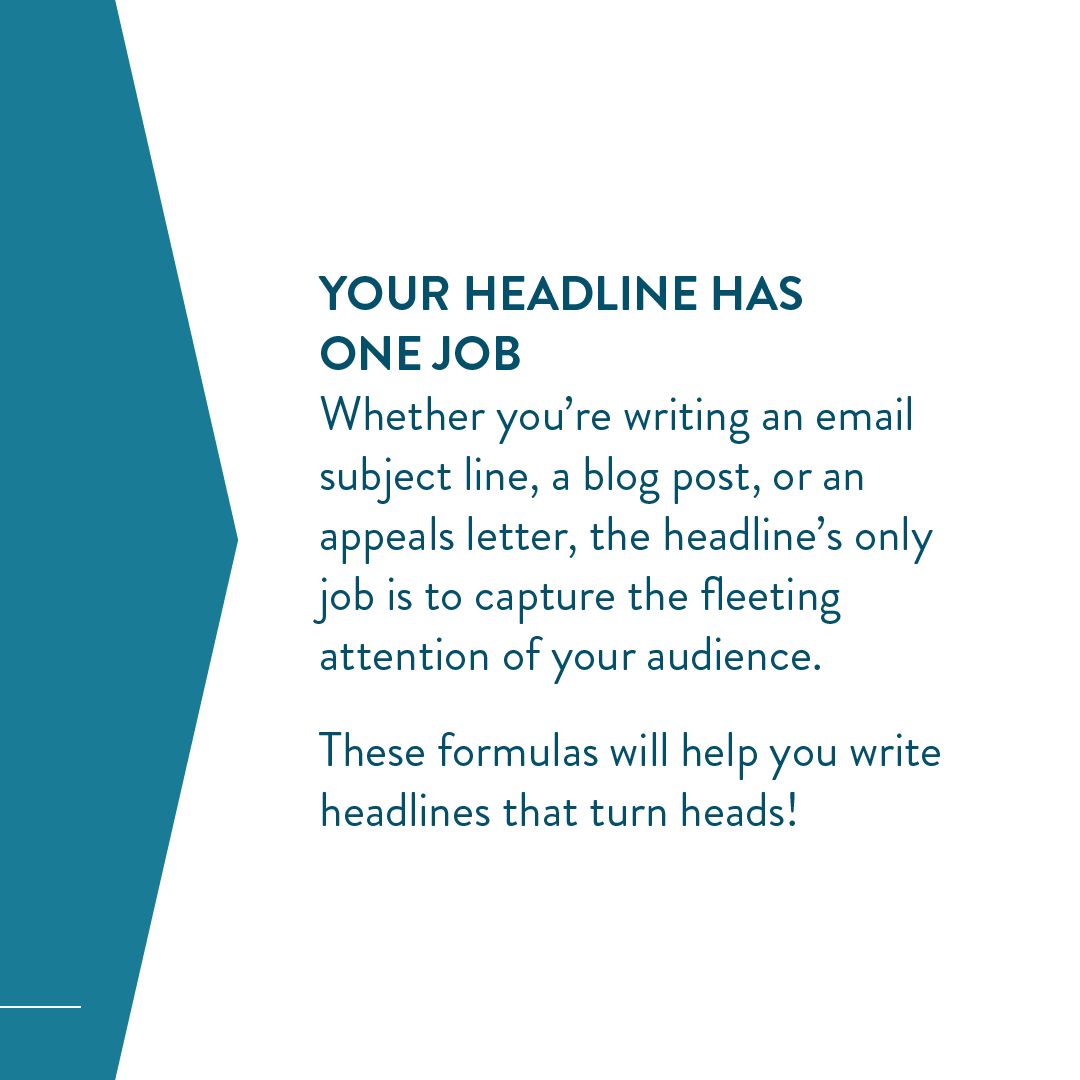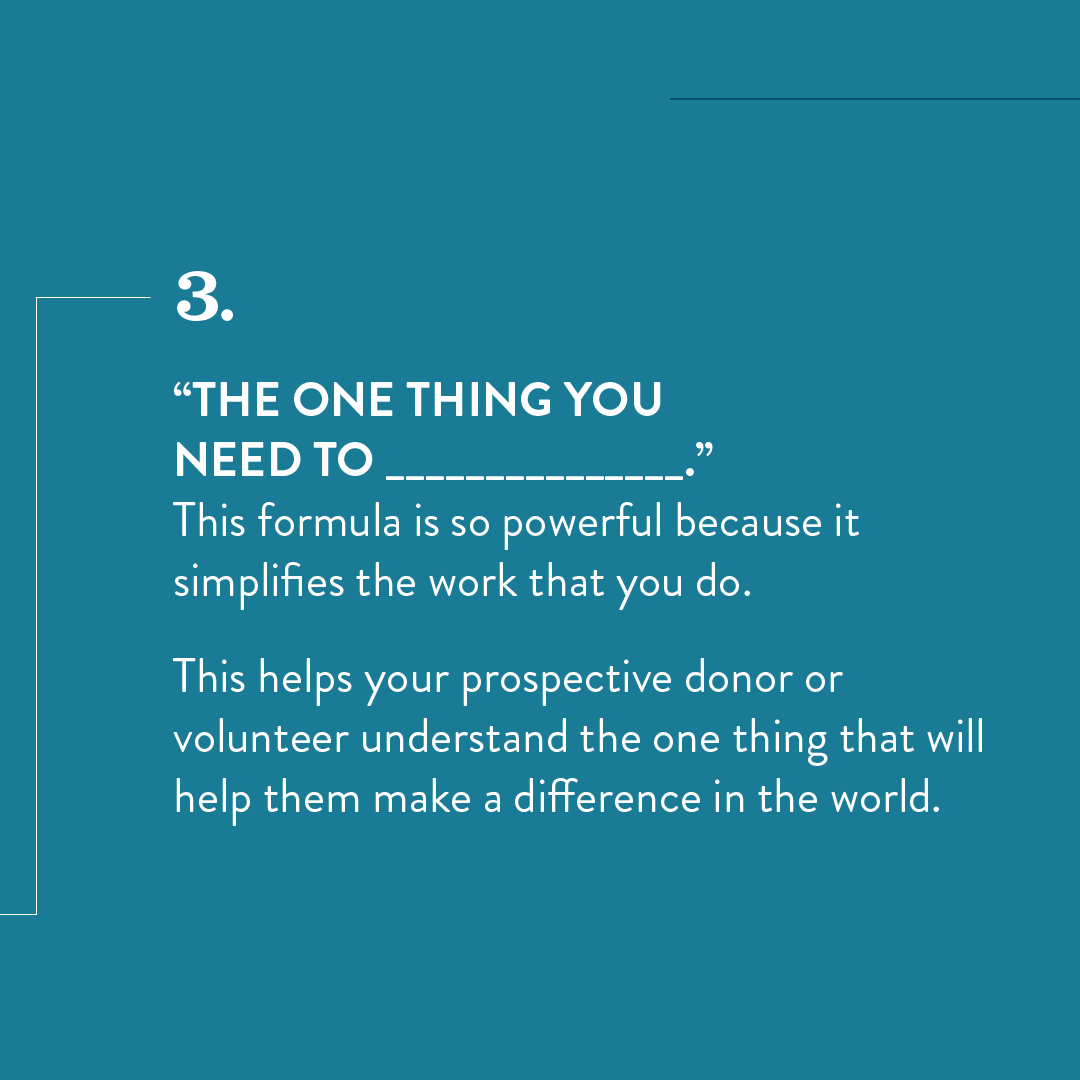How to write headlines that get noticed
This is part two in a three-part series on copywriting for nonprofits. Click to view: Part one, “5 principles for effective nonprofit copywriting”
Headlines are everywhere.
Billboards. Blog posts. Email subject lines. Video titles. Headlines are critical for success in copywriting because they do one important task: they grab attention.
I'm really excited to share three headline formulas with you because they work! I've used these very same formulas successfully with my nonprofit clients, so read on!
Now you can ___________ without __________.
This is a two-part headline. The first part is, “What do they want to do? What do they want to see in the world?” The answer to this is found in the values of your audience. Check out the guiding principles of nonprofit copywriting for more on connecting to your audience’s internal motivation.
The second part of this headline is, “What do they think is going to be the cost of doing it?” Is it time? Is it money? Is it annoyance? Is it frustration? This second part outlines a potential pain point that the audience wants to avoid.
My client FIUTS creates an amazing cultural showcase at the University of Washington where student performance groups perform cultural music and dance from their own cultures. The performers are professional caliber! It's an amazing event and the headline that we used for it was, “Travel the world without leaving Seattle.”
FIUTS’ audience loves to travel. They love to be exposed to international cultures, foods, art forms, and they love to interact with the international students that FIUTS serves. The headline talks about the benefit of traveling the world, cultural exploration. It says, “Hey, who needs a plane ticket (a cost)? Come to this event and get all the cultural exploration (benefit) you want!”
You’ll be amazed at what happened when _________________.
This one is fantastic because it pairs the promise of an emotional reward like being amazed or inspired with a hint of a story and an open loop.
Use this curiosity-building headline when you are profiling your clients, the people you serve, your volunteers, or your donors. This is the headline to use when you are telling a story of transformation. It doesn't have to be a massive transformation. It can be somebody getting better grades, somebody having more healthy fruits and vegetables to feed their family. The transformation can be subtle. When you use this headline, you make people want to read the story.
Here are some examples:
You'll be amazed at what happened when she went to school for the first time.
Don't you want to know what happened when she went to school, right? You can hint at what your programming does, what your mission is all about, and lead the viewer to a really, really great story.
You won't believe what happened when we built this.
The trick here with this formula is you don't want to give it all away. For example, if that headline was, “You won't believe what happened when we built this school in Rwanda.” Well, now everybody knows you build schools in Rwanda and they can guess that the kids went to school and that's great. You want to leave a little bit out. We're going back to that principle of creating open loops in our copywriting. You don't want to give away all the path because you want them to read the headline, which is an ad for the copy below.
Supercharge your writing
FREE checklist, “10 questions to supercharge your copywriting”
The one thing you need to ___________.
While the previous headline formula was good for talking about your donors, volunteers, or clients, this formula is best for talking to those audiences.
This formula is so powerful because it simplifies the work that you do. It simplifies the work that you do in such a way that a prospective donor or volunteer can very quickly grasp, “Oh, I just have to do this one thing to get this awesome outcome.” Like delivering clean water to a village in Africa or ensuring that elementary school kids in my community have healthy breakfasts at school, or any other positive outcome. “The one thing you need to do” is really powerful because it forces you to simplify your messaging and clearly demonstrates to your audience what it is that you do and the outcome of them taking action.
A couple of examples:
The one thing you need to change the face of education. What is it? I want to know!!
$10 delivers clean water to Marco.
That $10 is the one thing. Just ten dollars, and Marcos gets clean water. It's so simple. It could be that your mission is drilling wells to provide that clean water, but you don't need to get into that in the headline.
This headline simplifies your message so that the donor or volunteer, can very quickly understand how they can make change in the world. Their brain doesn't have to think too hard about what's going to happen when they do that one thing.
Do’s & Don’ts
Do write to your specific audience. Use the language and terminology they will understand and appeal to their internal motivations.
Don’t speak about groups of people. We have a hard time connecting emotionally to the plight of many, so if you’re using client stories to motivate, use one person.
Do be clear, concise, and direct. Headlines are meant to be attention-grabbing tidbits that encourage the reader to continue on to the content. Save the details for your blog post or video.
Don’t get attached to your headline. If a blog post isn’t getting a lot of traction, try rewriting your headline first! It’s the easiest and fastest way to give your content an extra boost.
I hope you’ve enjoyed these three nonprofit copywriting formulas! Let me know how you use them and the results you enjoy!








